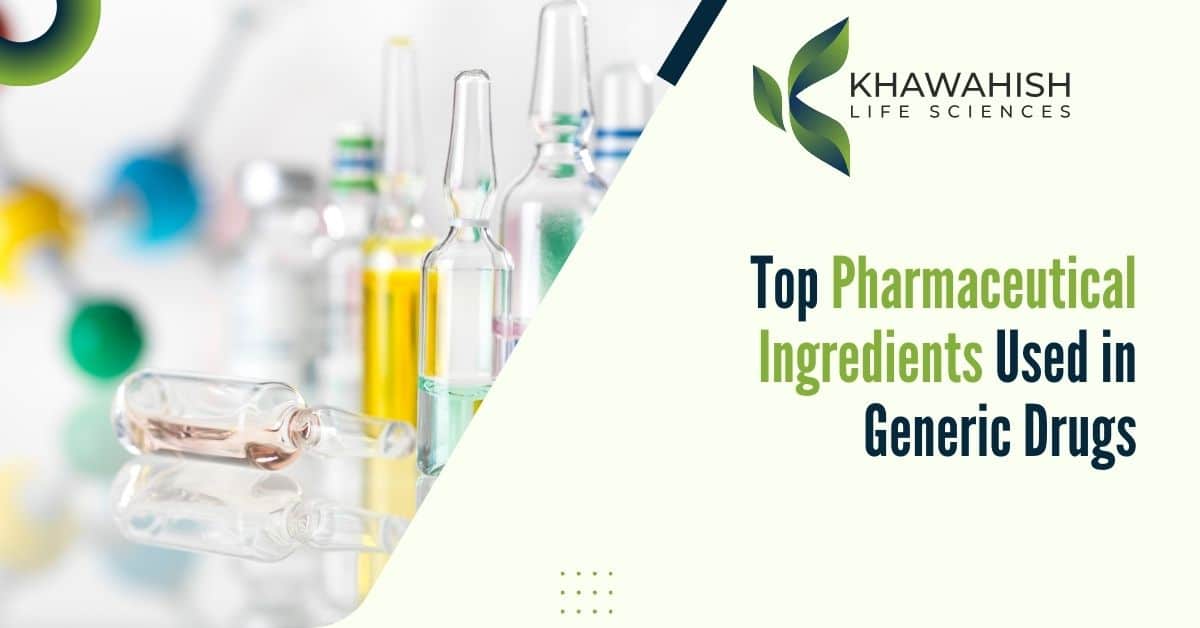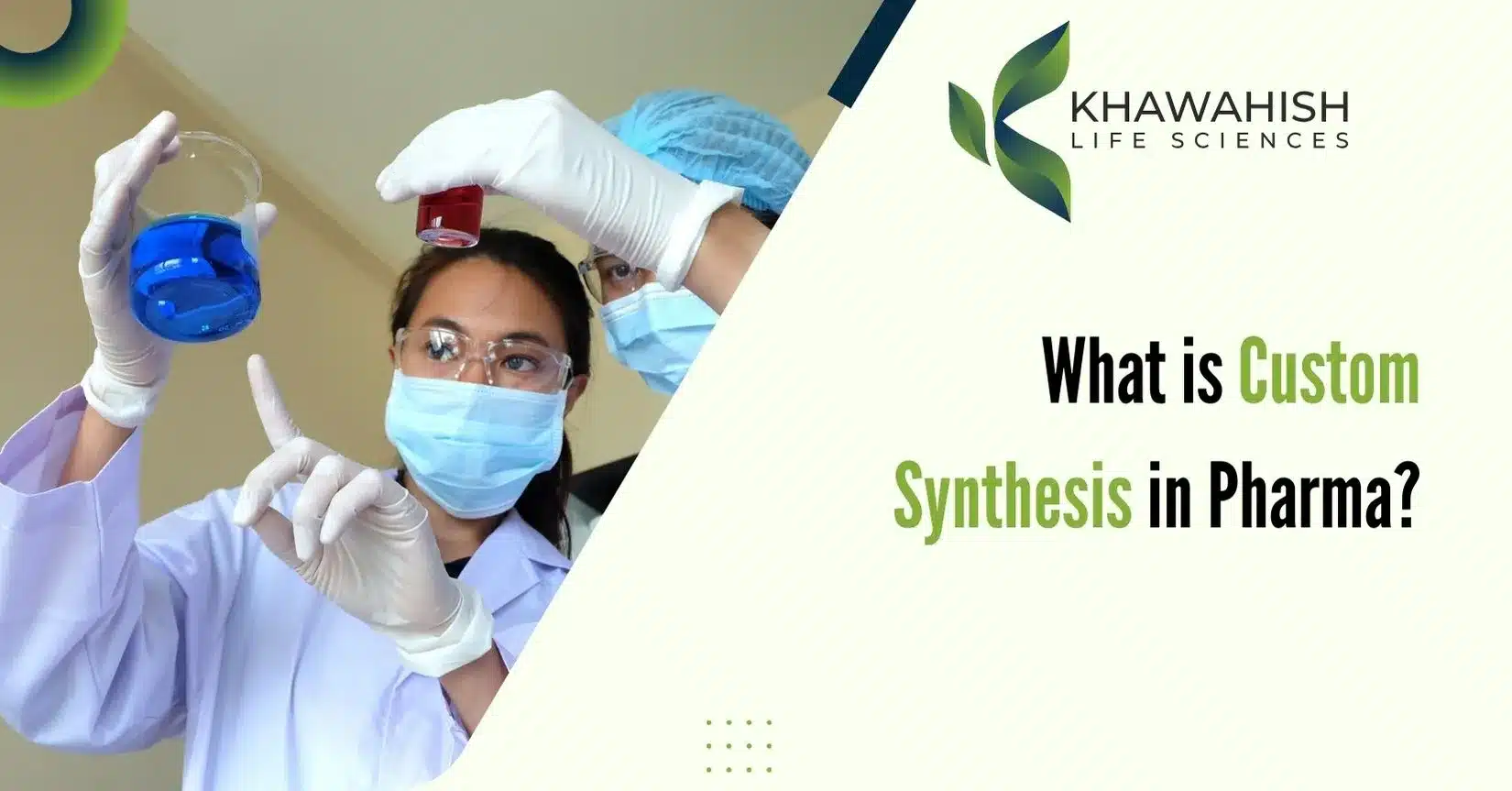
Generic drugs play a vital role in global healthcare by offering affordable alternatives to brand-name medications—without compromising on quality or efficacy. But what exactly goes into these medicines? In this blog, we explore the top pharmaceutical ingredients used in generic drugs, their functions, and why they are critical in modern pharmaceutical manufacturing.
What Are Generic Drugs?
Generic drugs are bioequivalent versions of branded drugs with the same active ingredients, dosage forms, strength, and administration routes. They are regulated strictly by agencies like the FDA, EMA, and CDSCO to ensure safety and therapeutic effectiveness.
Types of Pharmaceutical Ingredients
Generic drugs are typically composed of two types of ingredients:
- Active Pharmaceutical Ingredients (APIs):
These are the primary components responsible for the drug’s intended therapeutic effect. - Excipients (Inactive Ingredients):
These aid in drug formulation, stability, delivery, and absorption but do not have medicinal properties.
Top Active Pharmaceutical Ingredients (APIs) in Generic Drugs
Here are some of the most commonly used APIs found in generic drugs globally:
- Paracetamol (Acetaminophen)
Use: Pain relief and fever reduction
Therapeutic Class: Analgesic/Antipyretic
Why It’s Common: Safe, effective, and used in everything from cold remedies to post-surgical pain management.
- Amoxicillin
Use: Treats bacterial infections
Therapeutic Class: Antibiotic (Penicillin class)
Why It’s Common: Broad-spectrum use in respiratory and urinary infections.
- Metformin Hydrochloride
Use: Controls blood sugar in type 2 diabetes
Therapeutic Class: Antidiabetic agent (Biguanide)
Why It’s Common: Cost-effective and essential in diabetic care.
- Atorvastatin Calcium
Use: Lowers cholesterol
Therapeutic Class: Statins
Why It’s Common: Prescribed for cardiovascular disease prevention.
- Losartan Potassium
Use: Manages hypertension and protects kidneys in diabetes
Therapeutic Class: Angiotensin II receptor blocker (ARB)
Why It’s Common: Reliable and widely prescribed for blood pressure control.
- Omeprazole
Use: Treats GERD and stomach ulcers
Therapeutic Class: Proton Pump Inhibitor (PPI)
Why It’s Common: Highly effective with a strong safety profile.
- Salbutamol (Albuterol)
Use: Relieves asthma and chronic obstructive pulmonary disease (COPD) symptoms
Therapeutic Class: Bronchodilator
Why It’s Common: Life-saving medication in respiratory conditions.
- Ibuprofen
Use: Pain relief, inflammation reduction
Therapeutic Class: NSAID (Non-steroidal anti-inflammatory drug)
Why It’s Common: OTC availability and broad use in mild to moderate pain.
- Ciprofloxacin
Use: Broad-spectrum antibiotic
Therapeutic Class: Fluoroquinolone
Why It’s Common: Effective in treating infections in urinary tract, skin, and more.
- Levothyroxine Sodium
Use: Treats hypothyroidism
Therapeutic Class: Thyroid hormone
Why It’s Common: Vital for patients with thyroid disorders, usually prescribed lifelong.
Common Excipients Used in Generic Drugs
Though inactive, excipients are essential to drug formulation:
| Excipient | Function |
| Lactose | Filler/Binder |
| Microcrystalline Cellulose | Stabilizer and disintegrant |
| Magnesium Stearate | Lubricant for tablet compression |
| Sodium Starch Glycolate | Disintegrant to aid absorption |
| Gelatin | Capsule shell material |
| Titanium Dioxide | Opacifier and coloring agent |
Why Ingredient Sourcing Matters in Generic Manufacturing?
High-quality APIs and excipients ensure:
- Consistent therapeutic effect
- Patient safety
- Compliance with regulatory standards
Generic drug manufacturers must work with GMP-certified suppliers and perform strict quality control.
India’s Role in Global Generic Drug Ingredient Supply
India is the largest supplier of generic drugs globally, accounting for over 20% of global exports. Indian manufacturers are also key producers of APIs like Metformin, Paracetamol, and Atorvastatin.
🇮🇳 According to IBEF, India’s pharmaceutical industry is projected to reach $130 billion by 2030.
Conclusion
Generic drugs rely on a well-curated mix of high-quality APIs and excipients to ensure safety, efficacy, and affordability. As demand continues to rise, understanding these core ingredients becomes essential for pharmacists, healthcare professionals, and even patients.


